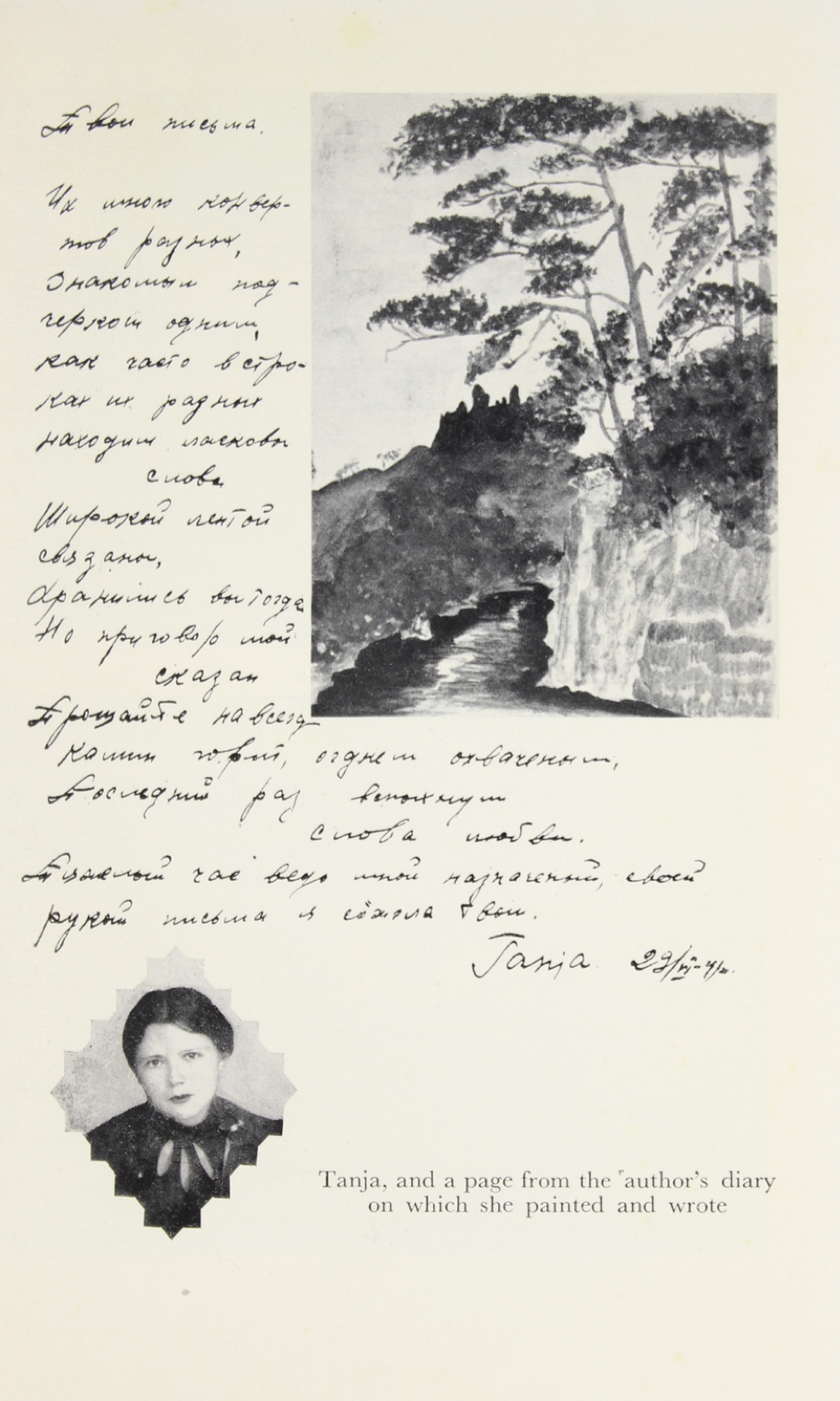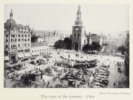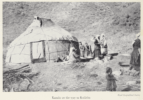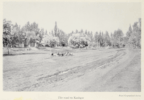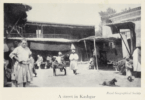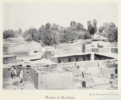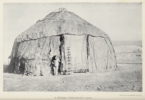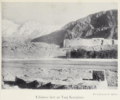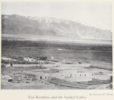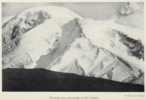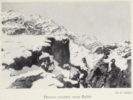Across the Roof of the World
Wilfred Skrede
- If anyone with a decent knowledge of ethnography and other such high-falutin’ subjects had made that trip with the intention of writing a book about it, the result would have been darned fine, I am sure. But I was only just nineteen when I left the workshop in Oslo where I was apprenticed, and my only intellectual asset was the boundless curiosityof youth. (from Preface)
- .
Summary
Across the Roof of the World (1954) is a humorous and delightful memoir about the adventurous journey of a nineteen-year-old Wilfred Skrede traveling from Oslo, Norway, to Little Norway in Canada through Sinkiang, the Takla Makan desert and the Himalayas in 1941, in the midst of World War II.
In the winter of 1941 Germany has just invaded Norway. As newly recruited members of the Allied Forces, Wilfred Skrede and his friends are in Stockholm waiting to be sent to the training camp for the Norwegian Air Force at Little Norway in Toronto, Canada. However, as more qualified soldiers get prioritized and roads are being closed off, Skrede and his friends decide to travel on their own to avoid the risk of being assigned to cut timber in Sweden throughout the war.
- That evening the five of us sat in a room in the Norwegian hostel poring over an old atlas and conceiving vague plans. [—] As the evening progressed, however, our ideas began to fall into line, and by the time we crept into bed we had all but achieved unanimity and there was a thick pencil line drawn across the old atlas. It ran right across European and Asiatic Russia and into China, from where there was a choice of two lines: one across China to Hongkong, and another over the Karakorum and Himalayas to the coastof India. (p. 14)
Having crossed Europe, the Norwegian group goes through passport control in Leningrad for permission to enter Asiatic Russia. The last stop on Russian territory is the village of Xiptoc in Soviet-Russian Kazakhstan, after which they reach the Chinese province of Sinkiang. At the beginning of the 1940’s, Sinkiang was under the rule of General Shun, who was running a communist republic in a civil war against China, with other Communist provinces at his side.
Traveling through Chinese Turkestan turns out to be very difficult for a group of young Europeans without a caravan, servants and money. In every town they are taken into police custody and they have to wait for weeks for permission to continue to the next town. After long waiting in the town of Kuldsha (= Kulja), on their way to Tihua by car, Skrede and his friends are injured in a serious car crash. Skrede breaks his back and is forced to stay hospitalized in Kuldsha for several months – an experience minutely described in the book. In the meantime, due to pressure from the police, Skrede’s friends, who have only minor injuries, are forced to continue to Tihua without him. After his long stay at the hospital in Kuldsha, Skrede is sent to Tihua where his friends are supposed to be. However, they have been forced to travel to Kashgar and Skrede sets out on a fourteen-day car journey along the Silk Road in order to join his friends again.
- It was a strange road, and a strange name it had: the Silk Road. It was certainly not because it was smooth that it was given the name, but because silk was the most important commodity carried by the caravans that have used it since the olden days. Across the sand dunes there is, in many places, no road as such at all. The desert wind has obliterated the tracks of centuries of camel traffic, and even up on the mountain passes it was only at the worst places that any attempt at levelling had been made. Rivers were crossed sometimes on bridges that restored one’s belief that the age of miracles was not passed, and sometimes the lorry had to become amphibian. There was the excitement of never knowing whether it would not tumble both us and its load into dirty, muddy soup. But then, of course, it is not a road that was built by engineers with levelling instruments and all the rest of their paraphernalia, but one that has been trodden and trampled by camels, horses, donkeys and human beings in a thousand years of movement from east to west and from west to east. (p. 118)
In Kashgar, Skrede is handed over to the police station and put in a cell, as has been his unfortunate luck throughout his journey. Thinking that he might get help from the British, Skrede tries to convince the Kasghar police to take him to the English Consul-General. After much arguing, the police finally escort him to the consulate where he is greeted by the Consul-General Eric Shipton, the Vice-Consul, Dr Sylway, and his Swedish missionary wife, Mrs Sylway.
- Mrs Sylway told me about the work of the Swedish missionaries in Kashgar and Yarkand, of the hard struggle they had had against superstition, ignorance and fanaticism, and of what they had done in the way of looking after the sick. Slowly but surely, however, the authorities had driven them out, and now she was alone with strict orders to confine her work of enlightenment and teaching to the area of the Consulate. Allah now was sovereign there. (p. 144)
Skrede is allowed to spend one month in Kashgar as the guest of Consul Eric Shipton, also known as a great mountain climber. As for Skrede’s friends, they have been forced to leave Kashgar long before he arrived and Skrede will not catch up with them again.
Eventually it is time to leave Kashgar and preparations for a journey across the Himalayas commence. Consul Shipton teaches Skrede how to ride a horse and the doctor at the Russian consulate makes Skrede a corset for his almost healed back. In Consul Shipton’s library Skrede finds Peter Fleming’s News from Tartary (1941), which he reads carefully for the purpose of following Flemming’s described route.
In a chapter called “The Pass”, Skrede has a trying experience crossing the vicious Mintaka Pass on the Karakorum Mountains, alone on horseback:
- The Pass – also called the Pass of the Thousand Ibex – is over 16,000 feet and notorious as the worst on the Gilgit Road. It lies right in the middle of the fantastic witches’ cauldron of screes, rock and glaciers thrown up where the mighty ranges of the Karakorum, Hindukush, Kwen-lun and Tien Shan bump into each other. [—] Bam-Dunjah, the Roof of the World, is the Khirgiz’ name for this merciless tract. (pp. 172f.)
In Mishgar, there is a letter to Skrede from a Major Crichton of the Gilgit Scouts saying that the deliverer of the letter will be his servant on the journey to Gilgit. Skrede is pleased to have become a boss and for the rest of the book he refers to himself in the third person, as “Sahib Skrede”.
In Balbit, Skrede meets Mir Mohammed Nazim Khan who gives him a horse for the road to Gilgit. In Between the Oxus and the Indus (1935) Charles Francis Schomberg provides a detailed account of this Mir of Hunza.
Passing Bandipur, Skrede travels by car from Srinagar to Rawalpindi, and after a two-day train ride he reaches Bombay where he now has to find a way to get to Canada. Eventually arrangements are made for Skrede to get on a boat in Karachi. The boat that is destined to go to New York passes Singapore, Madagascar, Cape Town, and Brazil.
The unpredictable events of the war don’t escape Skrede. One night in Singapore he hears a loud noise:
- We could see smoke and flames over the city. From up above, among the clouds, came the rising and falling drone of aeroplanes. […] The next day, it was December 8th, I saw that the battleships were gone from the harbour. [—]·The Japs were lined up against the walls, and the Australian soldiers straddled a bit lower behindtheir machine-guns. There was no superfluity of shelter space. As for the visible results of the bombs, it seemed that one block of business buildings and the Chinese quarter had borne the brunt. It didn’t amount, perhaps, to so very much as bombing, but the really unpleasant thing was the heat which caused the smell of dead bodies to lie heavily over the city before they had time to clear them up. The news was full of disasters: Pearl Harbour, then the Prince of Wales and Repulse were sunk. (p. 250)
Skrede reaches New York on January 20th 1942 from where he can get to his final destination, Little Norway in Toronto. “And when Sahib Skrede became No. 2017 in the R.N.A.F., there was none happier than he.” (p. 254)
.
Azize Güneş
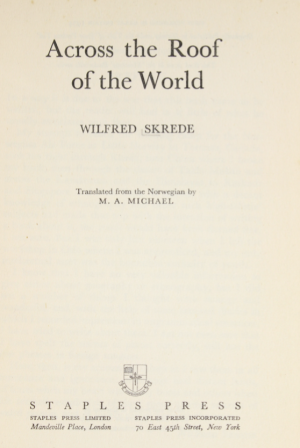
Publication
Original title: Over Verdens Tak
Author: Skrede, Wilfred
Translator: Michael, M.A.
Language: English, translated from Norwegian
Series: Monotype Baskerville series
Place: London
Publisher: Staples Press Ltd.
Year: 1954
Pages: 255
Digitized
Additional information:
On p. 85 you can find a page from Wilfred Skrede’s diary kept during his travels, with notes and scribbles by Tanja Fjodorova, the Russian nurse who took care of Skrede at the hospital in Kulja after he broke his back.
